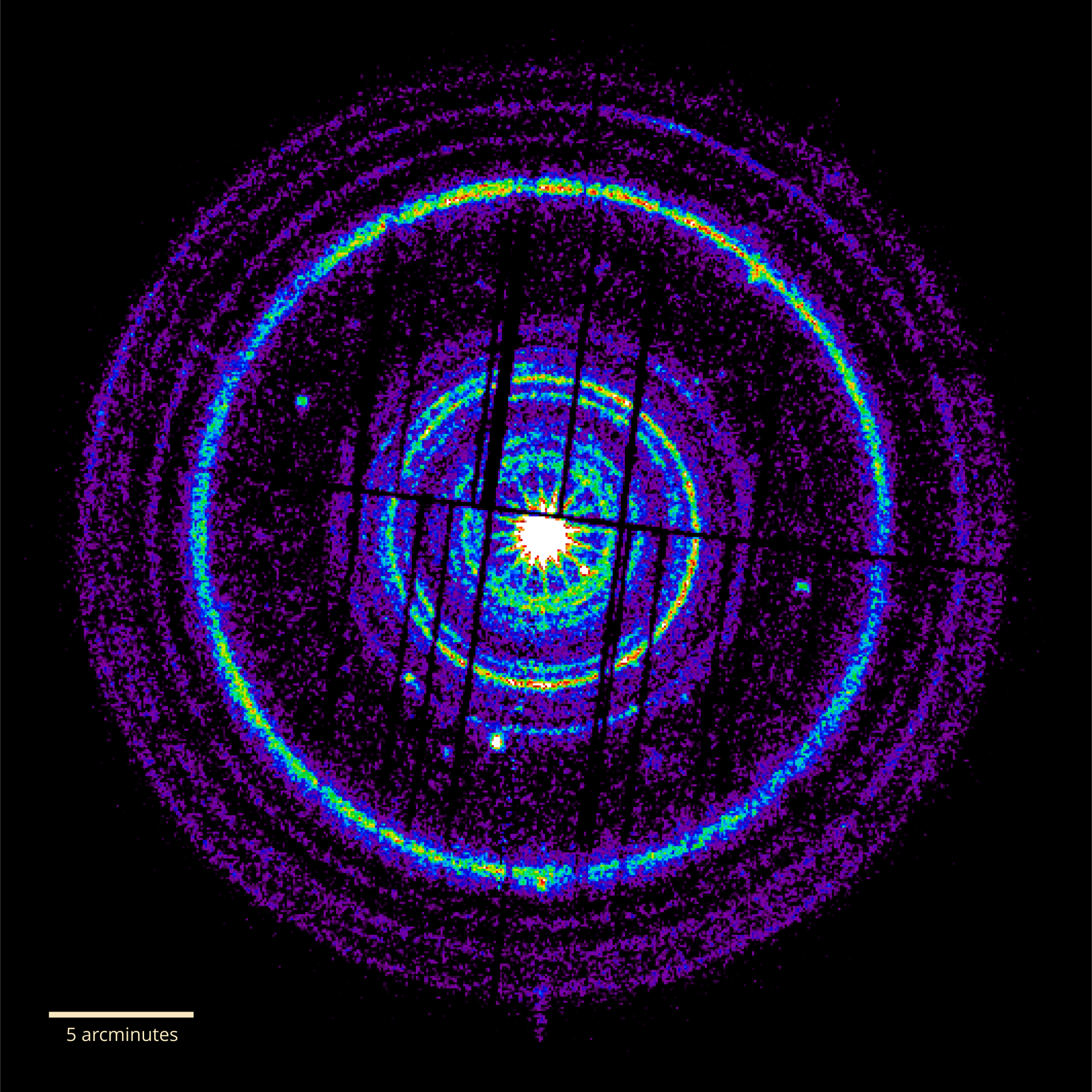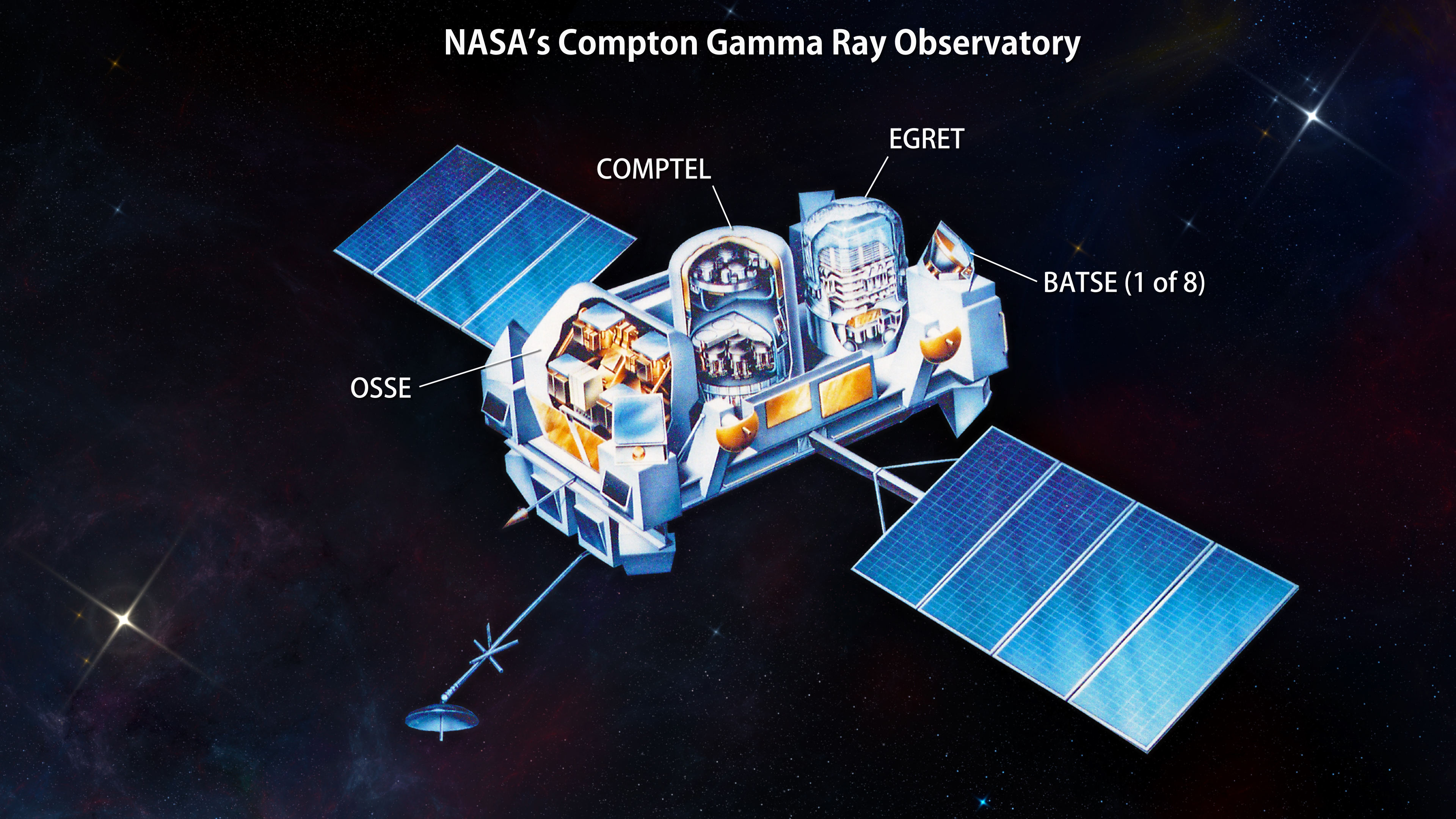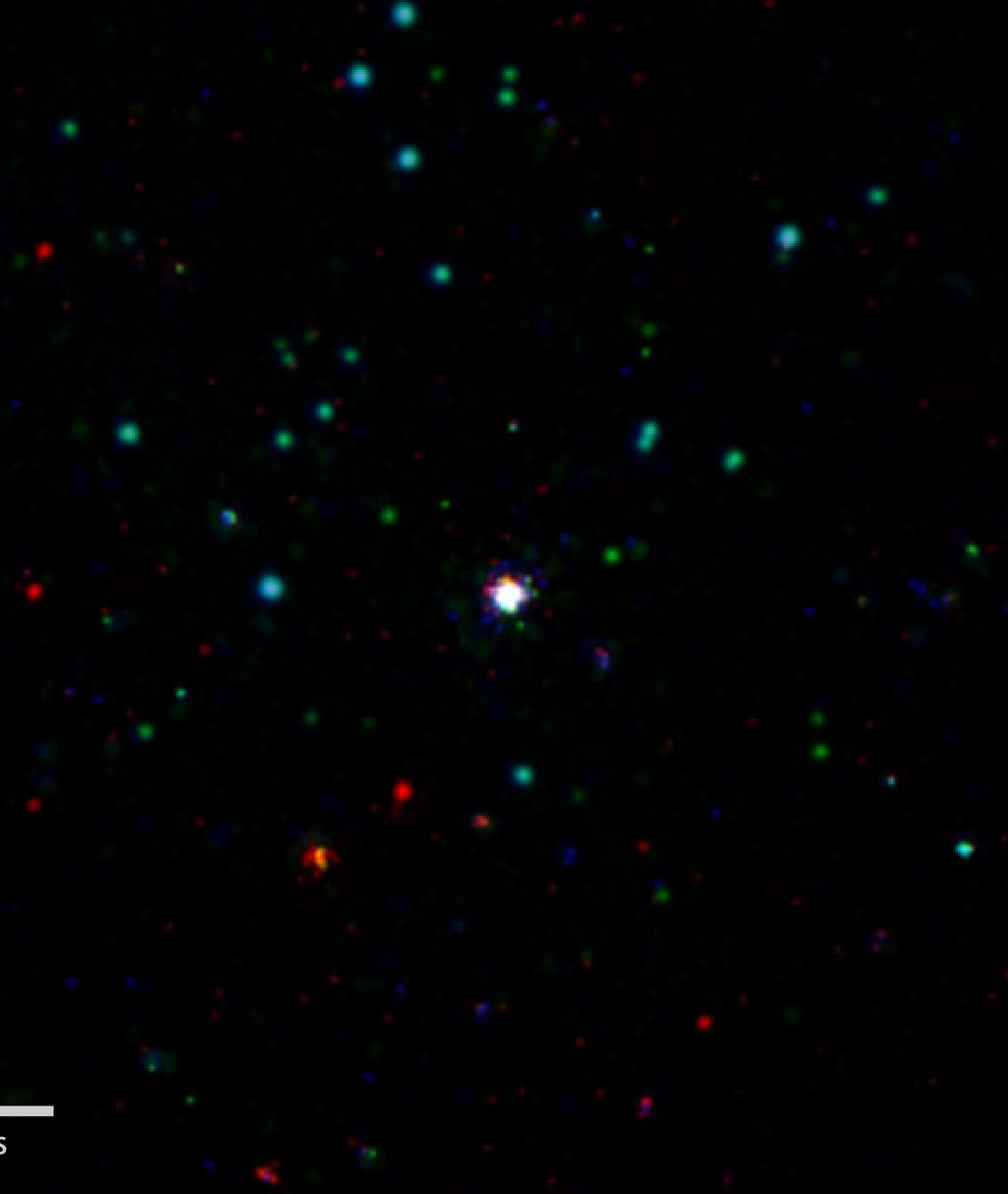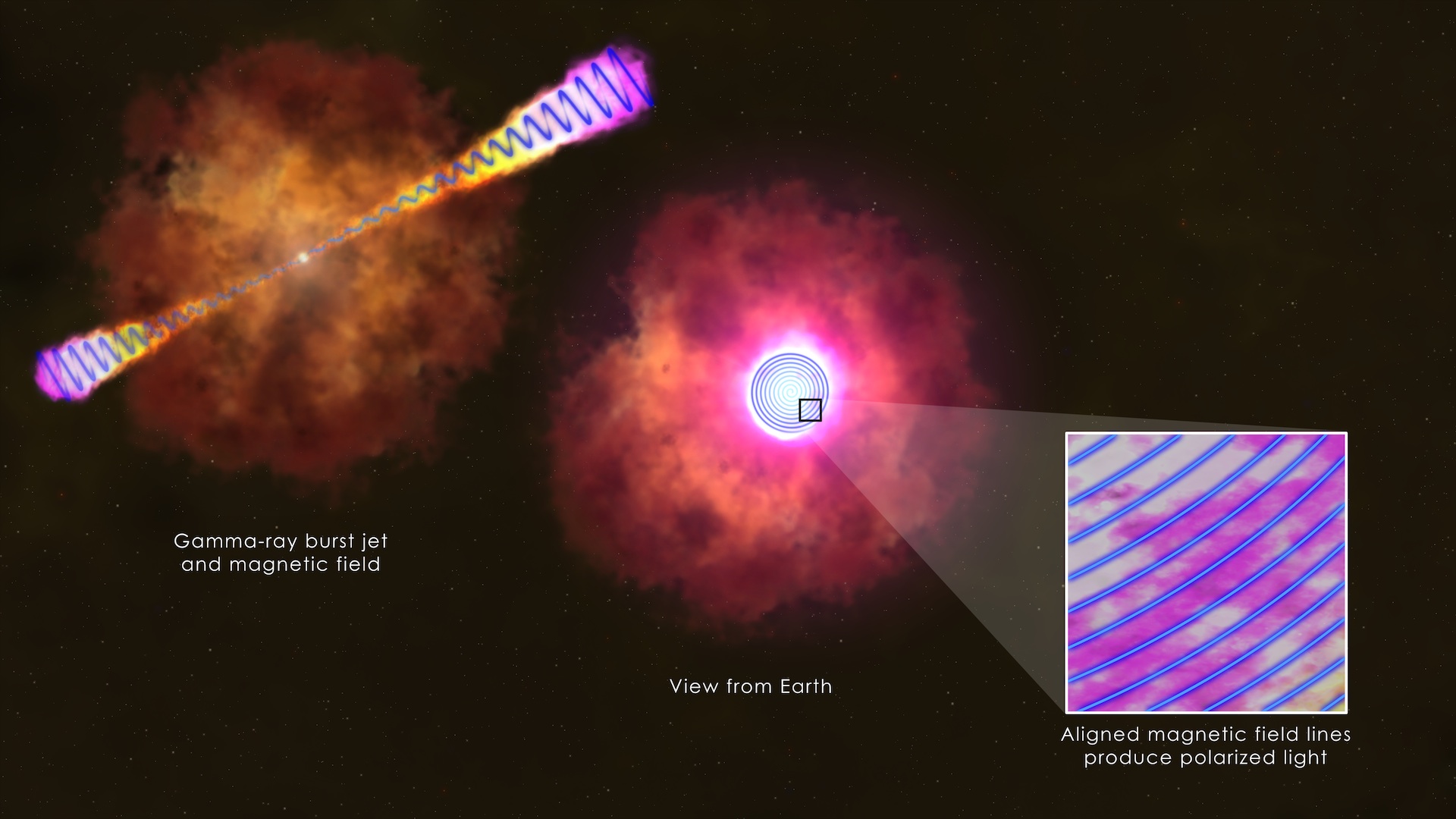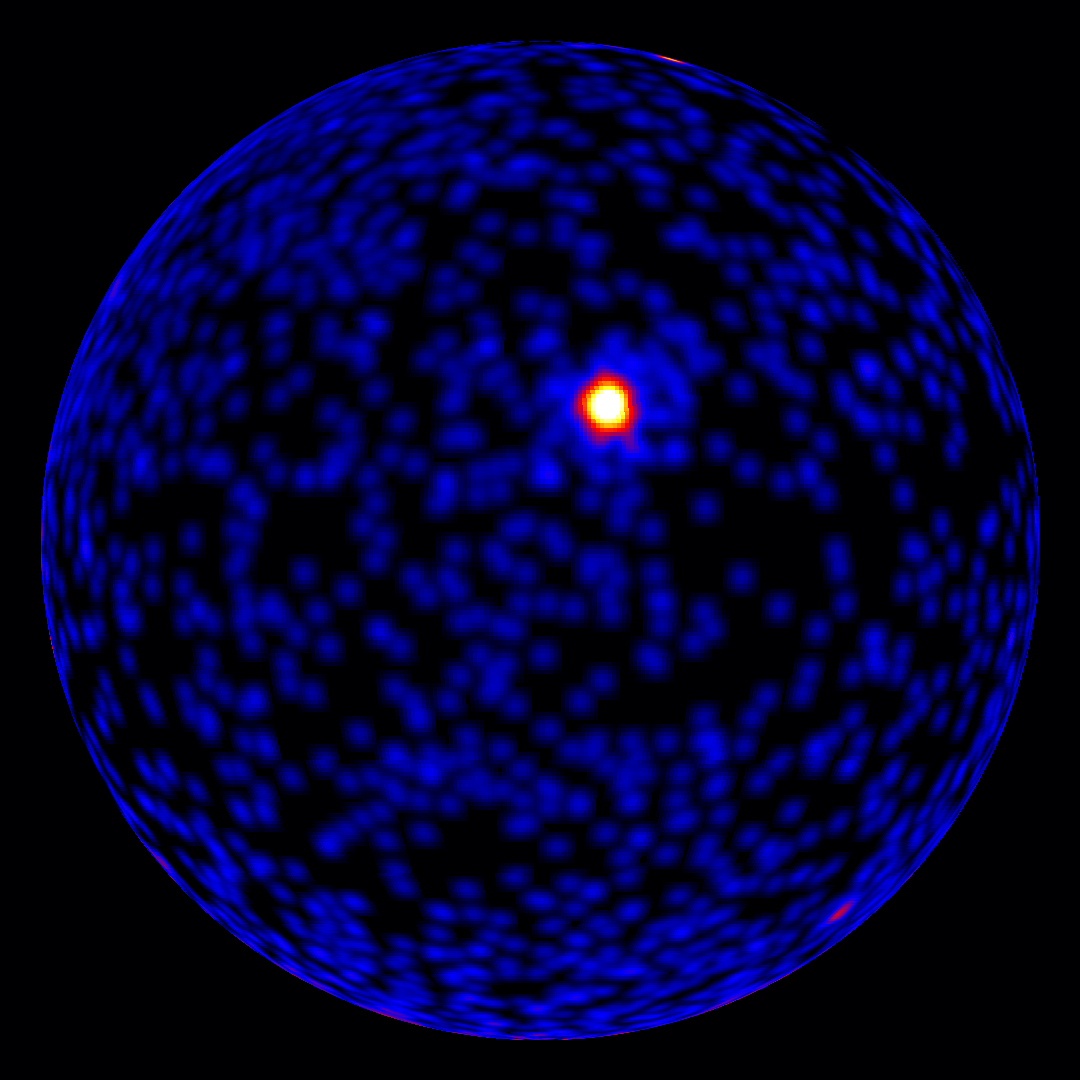Briefing Materials: NASA Missions Explore Record-Setting Cosmic Blast
On Thursday, Nov. 21, 2013, NASA held a media teleconference to discuss new findings related to a brilliant gamma-ray burst detected on April 27. Audio of the teleconference is available for download here.
Related feature story: www.nasa.gov/content/goddard/nasa-sees-watershed-cosmic-blast-in-unique-detail/.
Audio of Sylvia Zhu interview for a Science Podcast.
Briefing Speakers
Introduction: Paul Hertz, NASA Astrophysics Division Director, NASA Headquarters, Washington, D.C.
Charles Dermer, astrophysicist, Naval Research Laboratory, Washington, D.C.
Thomas Vestrand, astrophysicist, Los Alamos National Laboratory, Los Alamos, N.M.
Chryssa Kouveliotou, astrophysicist, NASA’s Marshall Space Flight Center, Huntsville, Ala.
Presenter 1: Charles Dermer
Gamma-ray bursts are the most luminous explosions in the cosmos. Astronomers think most occur when the core of a massive star runs out of nuclear fuel, collapses under its own weight, and forms a black hole. The black hole then drives jets of particles that drill all the way through the collapsing star at nearly the speed of light. Artist's rendering.
Credit: NASA's Goddard Space Flight Center
Theorists believe that GRB jets produce gamma rays by two processes involving shock waves. Shells of material within the jet move at different speeds and collide, generating internal shock waves that result in low-energy (million electron volt, or MeV) gamma rays. As the leading edge of the jet interacts with its environment, it generates an external shock wave that results in the production of high-energy (billion electron volt, or GeV) gamma rays. Artist's rendering.
Credit: NASA's Goddard Space Flight Center

This illustration shows the ingredients of the most common type of gamma-ray burst. The core of a massive star (left) has collapsed, forming a black hole that sends a jet moving through the collapsing star and out into space at near the speed of light. Radiation across the spectrum arises from hot ionized gas (plasma) in the vicinity of the newborn black hole, collisions among shells of fast-moving gas within the jet (internal shock waves), and from the leading edge of the jet as it sweeps up and interacts with its surroundings (external shock).
Credit: NASA's Goddard Space Flight Center

RAPTOR-T is one of several robotic observatories making up the the Rapid Telescopes for Optical Response (RAPTOR) project operated by Los Alamos National Laboratory. The instrument consists of four co-aligned 0.4-meter telescopes, each with a different color filter (the "T" stands for technicolor). RAPTOR-T is designed to detect color changes in the optical flash accompanying a gamma-ray burst, which can yield information on the explosion's dynamics, environment and distance.
Credit: T. Vestrand, LANL
This movie shows GRB 130427A as viewed by the RAPTOR telescopes located near Los Alamos, N.M, and on Mount Haleakala on the island of Maui, Hawaii. The movie opens with wide-field images acquired by a RAPTOR All-Sky Monitor, one of the three identical systems to first detect the burst's optical flash. The movie then switches to observations from RAPTOR-T, which autonomously turned toward the burst after receiving an alert from NASA's Swift. The telescope imaged the burst for 2 hours and captured simultaneous images in four different colors.
Credit: T. Vestrand, LANL

Better known as NuSTAR, the Nuclear Spectroscopic Telescope Array is the first orbiting observatory able to focus high-energy X-rays. The instrument consists of two co-aligned grazing incidence telescopes with advanced optics and detectors that extend its sensitivity to higher energies (3,000 to 79,000 electron volts) than previous X-ray missions.
Credit: NASA/JPL-Caltech

Instruments aboard three NASA missions and the ground-based RAPTOR telescope provide the most detailed multi-energy look at changing emissions of GRB 130427A. The early pulse of gamma rays detected by Fermi's GBM exhibits behaviors confounding all models that explain the emission based on colliding shells. Visible light measured by RAPTOR closely tracks the high-energy gamma rays detected by Fermi LAT, an unexpected relationship. Data from Swift's BAT, XRT and UVOT instruments, in concert with measurements from ground telescopes, capture the evolution of the GRB over weeks and show that it shares properties with much more distant bursts. Observations by NuSTAR and Fermi LAT challenge a 12-year-old prediction of how the emission components in a GRB spectrum should change with time. The ground-based measurements shown here come from the Faulkes Telescope North, located at Haleakala Observatory in Hawaii, the Liverpool Telescope on the island of La Palma, Spain, and the MITSuME Telescopes in Japan. For clarity, this chart omits error bars for all measurements.
Credit: NASA's Goddard Space Flight Center
This movie shows the jet associated with a gamma-ray burst as it emerges from a collapsing star and drives into space at nearly the speed of light. The frames are part of a high-resolution 3-D hydrodynamical simulation by Davide Lazzati at North Carolina State University and Brian Morsony at the University of Wisconsin, Madison, using the Pleiades supercomputer at NASA's Ames Research Center. The movie covers the first 8 seconds following the jet's emergence from the star.
Credit: Davide Lazzati (NCSU) and Brian Morsony (Univ. of Wisconsin)
NASA Swift's UVOT instrument captured the fading light of GRB 130427A using images acquired through its w1 and w2 filters, which correspond to energies of 4.7 and 6.1 electron volts, respectively. The movie begins about 6 minutes after the burst triggered Fermi's GBM instrument and lasts 10.3 days. Angular width of the movie is 100 arcseconds.
Credit: NASA/Swift/S. Oates, UCL-MSSL

This image illustrates the ingredients of the most common type of gamma-ray burst. The core of a massive star (left) has collapsed, forming a black hole that sends a jet moving through the collapsing star and out into space at near the speed of light. Radiation across the spectrum arises from hot ionized gas (plasma) in the vicinity of the newborn black hole, collisions among shells of fast-moving gas within the jet (internal shock waves), and from the leading edge of the jet as it sweeps up and interacts with its surroundings (external shock).
Unlabeled
Credit: NASA's Goddard Space Flight Center
For More Information
Credits
Please give credit for this item to:
NASA's Goddard Space Flight Center. However, individual elements should be credited as indicated above.
-
Producer
- Scott Wiessinger (USRA)
-
Science writer
- Francis Reddy (University of Maryland College Park)
-
Animator
- Scott Wiessinger (KBR Wyle Services, LLC)
-
Visualizer
- Francis Reddy (University of Maryland College Park)
-
Graphics
- Francis Reddy (University of Maryland College Park)
Release date
This page was originally published on Thursday, November 21, 2013.
This page was last updated on Wednesday, May 3, 2023 at 1:51 PM EDT.
Missions
This visualization is related to the following missions:Series
This visualization can be found in the following series:Tapes
This visualization originally appeared on the following tapes:-
GRB Media Telecon
(ID: 2013098)
Thursday, November 21, 2013 at 5:00AM
Produced by - Robert Crippen (NASA)
Datasets used in this visualization
-
[Swift]
ID: 217 -
[Fermi]
ID: 687
Note: While we identify the data sets used in these visualizations, we do not store any further details, nor the data sets themselves on our site.
